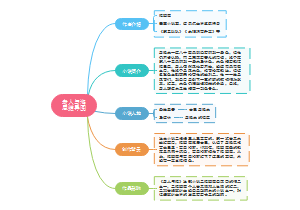导图社区 高能核物理导论
- 39
- 0
- 1
- 举报
高能核物理导论
粒子物理与原子核物理(高能理论物理、高能实验物理)研究生阶段修读课程。主要根据华中师范大学粒子物理研究所秦广友教授讲义(理论部分)和毛亚显副教授幻灯片(实验部分)。仅供参考交流学习之用。
编辑于2023-02-10 21:39:44 湖北省- 高能核物理导论
- 高能核物理导论
粒子物理与原子核物理(高能理论物理、高能实验物理)研究生阶段修读课程。主要根据华中师范大学粒子物理研究所秦广友教授讲义(理论部分)和毛亚显副教授幻灯片(实验部分)。仅供参考交流学习之用。
- writing task 2 for IELTS
雅思考试大作文写作指南,包含雅思写作任务2的文章结构和语言结构分析,评分标准简介以及话题总结(涵盖科学、文化、社会、教育等热点常考话题),呈现形式为文章逻辑和话题之间的关系。作者为华中师范大学在读全日制研究生,总结时间:2021年,更改历时2年,出版为2023年,希望您考试顺利,共同成长!全文由2页面组成。第一页面为语法结构,第二页面为语言话题总结。
高能核物理导论
社区模板帮助中心,点此进入>>
- 高能核物理导论
粒子物理与原子核物理(高能理论物理、高能实验物理)研究生阶段修读课程。主要根据华中师范大学粒子物理研究所秦广友教授讲义(理论部分)和毛亚显副教授幻灯片(实验部分)。仅供参考交流学习之用。
- writing task 2 for IELTS
雅思考试大作文写作指南,包含雅思写作任务2的文章结构和语言结构分析,评分标准简介以及话题总结(涵盖科学、文化、社会、教育等热点常考话题),呈现形式为文章逻辑和话题之间的关系。作者为华中师范大学在读全日制研究生,总结时间:2021年,更改历时2年,出版为2023年,希望您考试顺利,共同成长!全文由2页面组成。第一页面为语法结构,第二页面为语言话题总结。
- 相似推荐
- 大纲
高能核物理导论
2.experiment
cross section
for two, two
(ND)non diffraction(弥散)
(CD)central diffraction
(SD)single diffraction
(DD)double diffraction
相对论重离子碰撞
jet quenching
内容: 为了研究宇宙早期演化,在实验上通过极端高能重离子碰撞实验来进行, 中间过程形成高温致密媒介物质,这种媒介的条件类似于宇宙早期,喷注 (即这个过程得到的结果粒子)与媒介发生作用,而这个过程发生了显著的 能量损失,由此这个能量损失称之为喷注淬火(jet quenching)
luminosity
category
integration
discrete
(注意断句)
QGP(quantum gluon plasma) 又称火球(fireball)
hard vs soft
process
h-hard scattering, High-p_T parton(photon)翻译为硬过程
probes
h-high p_T
s-low p_T
reason-不能直接探测QGP,因而需要借助途径-探针这种方式来研究其性质
example-电弱探针(光子、W、Z),起到控制变量的作用,与QGP不作用,可以起到确保其他探针是正确的作用
triplet: 三重 octet: 八重 October: 十月 decuplet: 十重
scattering
freeze-out
thermal
自由程:分子两次连续碰撞之间的直线距离, 平均意味着多次求和取平均
connective
发生能动量交换
function
碎裂(fragmentation)函数 describe the probability that a parton(a particle is viewed as the constituent of hadrons) fragment into particular hadron with specific energy(momentum) of the parton
Bjorken函数
背景: Bjorken model, estimate the energy density
用途: initial energy density
BDMPS方程
研究了QGP能量损失的量级/数值
能量损失影响因素:
横向参量
动量
低横动量: <2GeV/c, 使用非微扰QCD理论研究
中横动量:2-8GeV/c
高横动量:>8-10GeV/c
粒子经过QGP后:
核修正因子 (nuclear modificatin factor)
=1, no modification
!=1
>1, enhanced
<1, supressed压低效应
解释的关键词:探针和QGP之间的能量转移
大系统 vs 小系统
大-Pb+Pb; Au+Au等 小-p+p; d(quark)+Au; He^(Left3)+Au
1. 对于小系统,需要更多的实验去尝试,是前沿方向 2. 小系统在中横动量区域需要考虑Coalescence Model(一个考虑演化历史从而分析相关事件分布的模型,应用在生物学和社会学等)、精细化(碎裂函数等)和标度性
与机器学习的结合
Science:
abbreviation
PID
particle identification 粒子鉴别
QFD OOP
quark flavour dynamics object oriented programming-C++宗旨
1. Basics: collsion kinematics
基本研究方法
碰撞
基本研究参量
快度
赝快度
碰撞中心度
2. Initial state geometry and fluctuations
Optical Glauber Model 将核子看作连续分布,最终得到的散射界面和真实物理图景相差较大
vs
研究参量 重叠函数,其积分过后和粒子数目相关联
Monte-Carlo Glauber Model 使用的是离散分布,可以考虑粒子的涨落(fluctuation)信息,可以更加真实的反映物理图景
3. Kinetic theory and transport process
transport process
研究对象特点: (1)dilute稀薄的 (2)弱相互作用的 (3)经典的,即德布罗意波长远小于由总体体积和粒子数决定的粒子间距
德布罗意波长 vs 康普顿波长 vs 平均自由程
de: 非相对论情形下粒子作为波包下粒子大小的度量 com: 相对论情形下粒子大小的度量 mean: 粒子发生连续两次碰撞间的直线距离
研究对象
能量
热传导(heat conductivity)
描述参量:比热容
描述内容:粒子之间由温度等参量决定的粒子之间传递了多少能量
动量(viscosity, 粘滞性)
(3.26)
粒子数转移(扩散, diffusion)
扩散系数D
落脚点
Boltzmann equation
描述分布函数f的运动方程
经典 vs 量子统计
cl: 不考虑量子效应 quantum: 考虑量子效应-玻色爱因斯坦分布增强因子和F-D分布压低因子(3.94)
推导方法
1. 粒子的动力学特征
2. 从表征第一性原理的H出发,逻辑为 Liouville to BBGKY to Boltzmann
Boltzmann equation
collision term and cross section
from Liouville to BBGKY to Boltzmann
macroscopic quantities
conservation laws
When is conserved? all the time for the object is kinetic transport equation
what charge, energy and momentum conservation and related to collision term's properties
Boltzmann H-theorem
What? the equilibrium state is the state with the maximum entropy. Mindset: proof. Then gives the equilibrium distribution function.
4. Statistics and QCD thermodynamics
thermodynamics relation
connection: statistics physics' 3 ensembles
quantum statistics: density operator
designed for getting expectation value
origin: Hamiltonian equation and possibility sum to 1
density operator for equilibrium: diagonal density matrix proof: Liouville equation and commute relation
statistics of various ensembles
3 key points: 1. the each density matrix 2. S can be computed from density matrix's trace function 3. canonical and grand-canonical ensemble need more calculations
thermodynamics of a non-interacting gas
non-interacting gas: thermal properties do NOT change with time, equivalent to no interaction
key point: get P, n, s, e
hadron resonance gas
concept: a model, describe low T hadron phase of QCD
curosity: degeneracy factor's physical explanation? For simplicity and generality.
limits kinds: 1.non-relativistic Boltzmann limit 2.ultra-relativistic limit 3.ultra-relativistic Boltzmann limit 4.ultra-relativistic limit: 0 chemical potential
quark-gluon gas: ultra-relativistic limit
the interaction among quarks and gluons CAN be neglected: 1. 0 chemical potential 2. non-zero chemical potential
density for conserved charge
When is conserved? there is no conserced condition, but for conservation: 3 flavours and only include baryon number and strangeness.
the bag model
for calculating Tc by introducing the bag constant B
5.relativistic fluid dynamics
from kinetic theory to fluid dynamics
key points: three length and dilute, dense, liquid gas regime
key points: Knudsen number K and ideal hydrodynamics, viscous fluid dynamics and breakdown hydrodynamics
ideal hydrodynamics
From Boltzmann equation's cross section infinity limit get ideal fluid conservation laws, then get entropy conservation. Local rest frame and lab frame for different flow velocity, describe current equation. e, p, n do NOT depend on space-time rapidity, get Bjorken hydrodynamics.
viscous hydrodynamics
Back to Boltzmann equationn, introducing non-equilibrium contribution to get equation and observables, Navier-Stokes and Israel-Steward hydrodynamics to find underlying(missing) equations.









